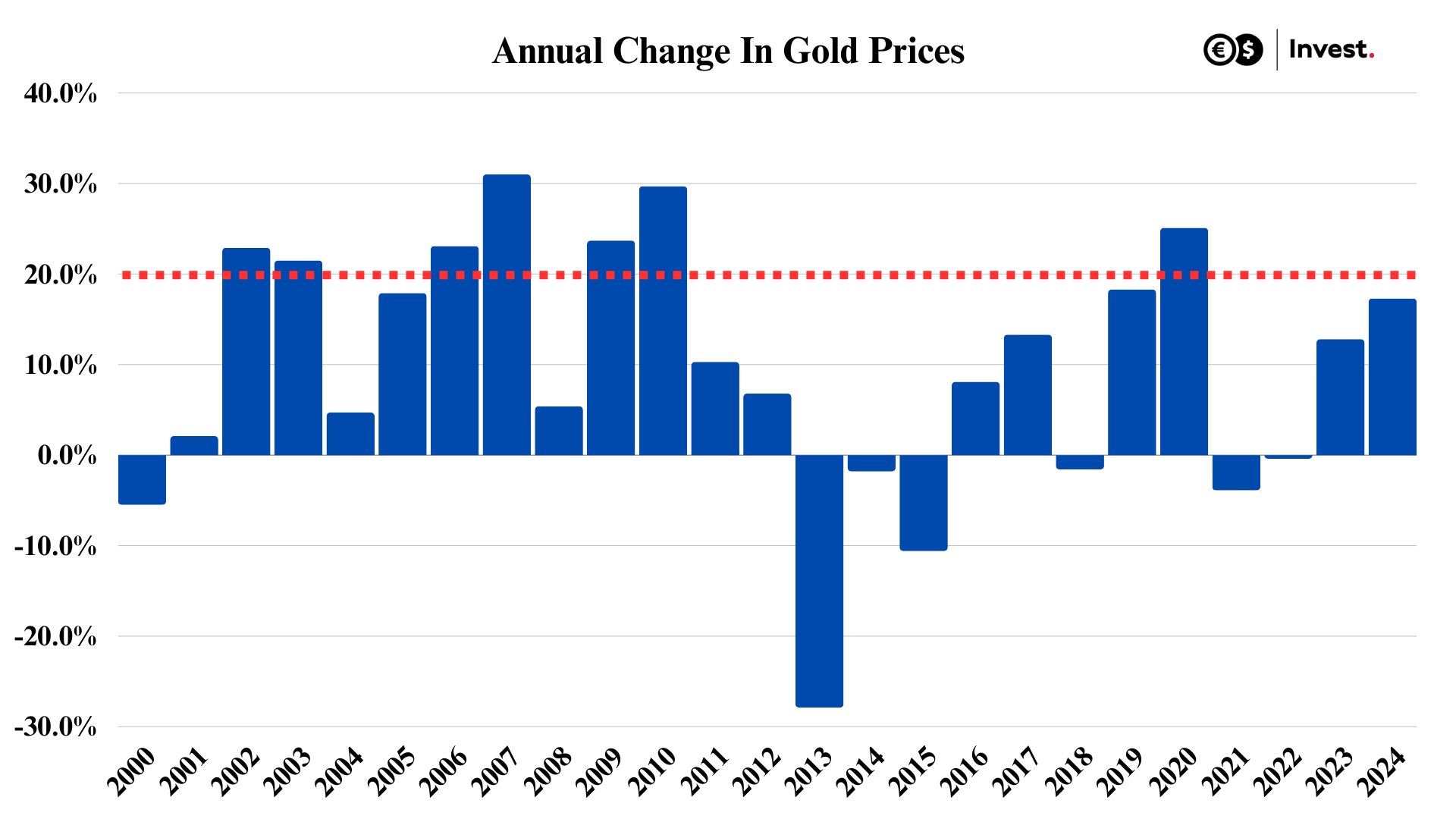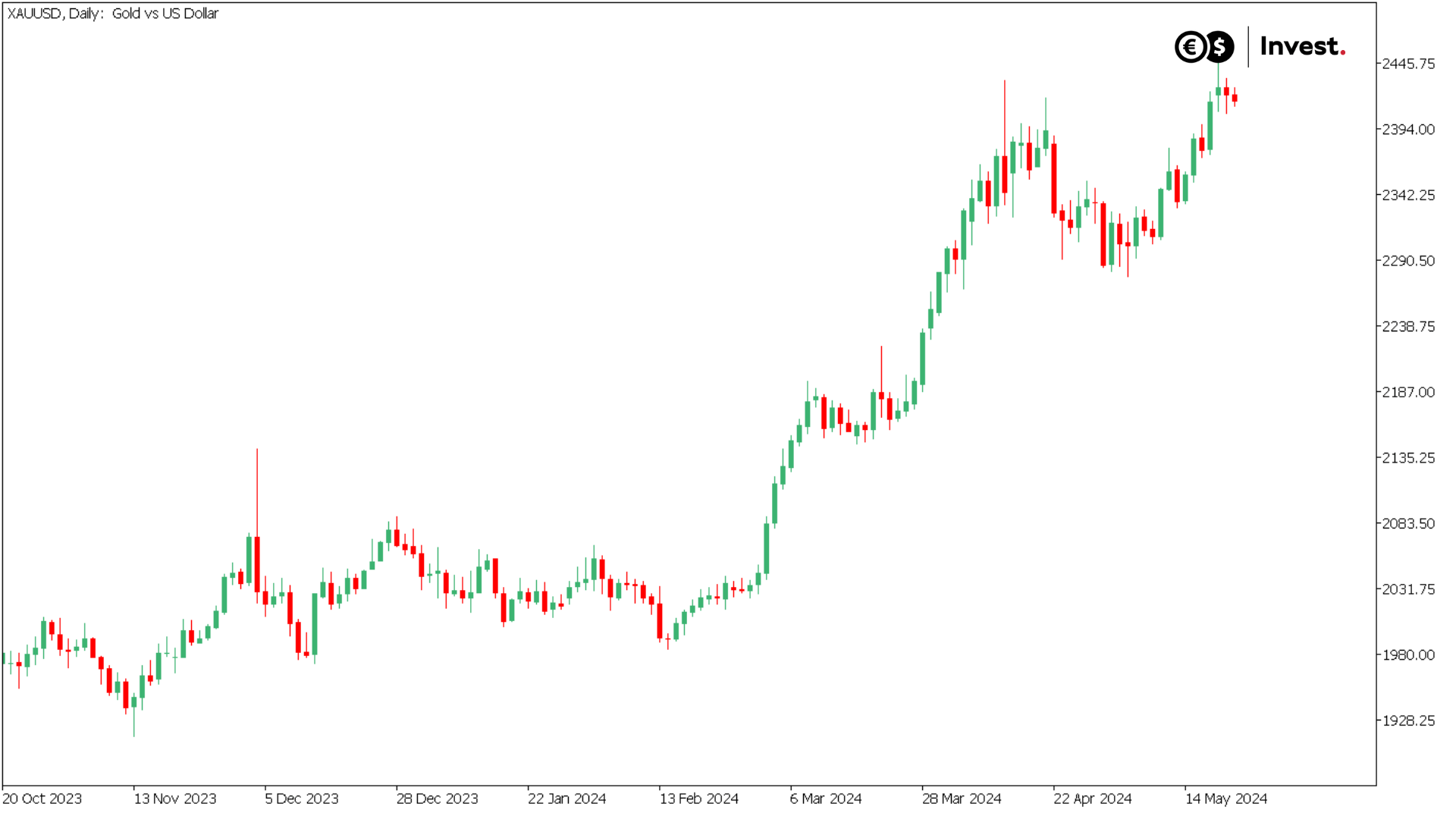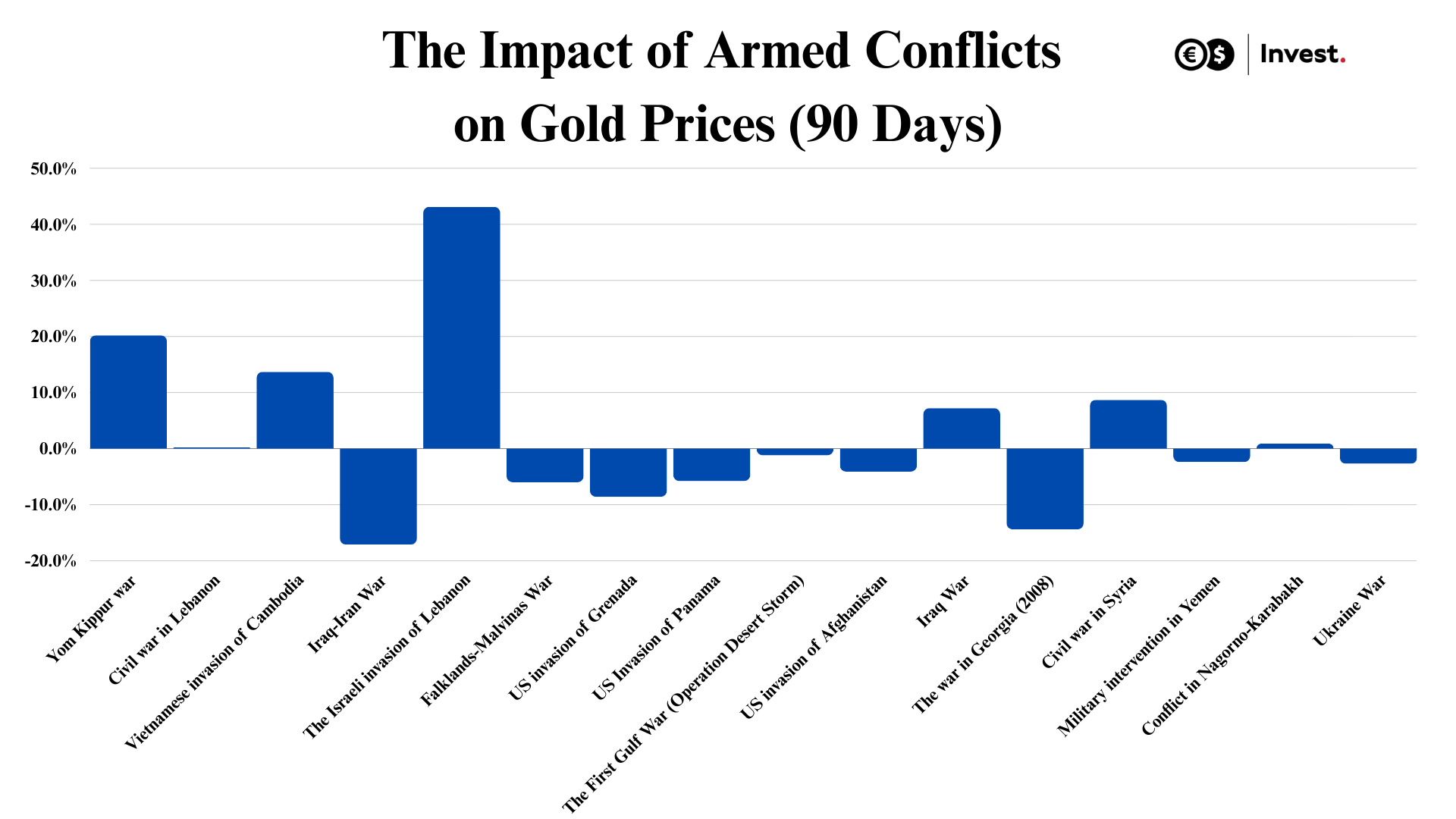The price of gold has increased by 18 per cent since the beginning of the year. Despite this, the current rate of increase in the gold price is not significantly above its historical average. What factors are currently driving gold price increases? Should we expect the increases to continue in the near term, or is a sell-off about to begin?
Table of contents:
Are the current increases extraordinary?
Since 1971, following the move away from the gold standard, annual price increases for the metal have averaged 7.5 per cent, which is comparable to the nominal returns of the main US S&P 500 index over the same period. Gold bullion's recent price increases are largely due to three factors:
- The increase in geopolitical tensions in Ukraine and the Middle East, including the unexpected death of the Iranian President,
- The dollar's weakness over the past two years,

Source: Tradingview
- Purchases by central banks

Source: WGC
It is worth recalling that there have been seven years as recently as this century when gold has gained more than 20 per cent a year, not least during crisis periods. Therefore, the current increase of 18 per cent does not seem exceptional.

Source: Conotoxia own study
What gold prices can we expect?
Given the lack of negative factors affecting the gold price and the possible 'black swans' on the horizon, a rise above 20 per cent this year seems likely, which could mean further rises in the metal's price in 2024, even above the US$2,500 per ounce level.

Source: Conotoxia MT5, XAUUSD, Daily
An escalation of conflict in the Middle East may not necessarily mean a drastic increase in the price of the king of metals. Based on the armed conflicts of the past 50 years, it is difficult to conclude unequivocally that gold can be a 'safe haven' during such events. Of the 16 major conflicts that occurred during this time, in only 44 per cent of the cases did the gold price achieve a positive return three months after their outbreak.

Source: Conotoxia own study
Grzegorz Dróżdż, CAI MPW, Market Analyst of Conotoxia Ltd. (Conotoxia investment service)
The above trade publication does not constitute an investment recommendation or information recommending or suggesting an investment strategy within the meaning of Regulation (EU) No. 596/2014 of April 16, 2014. It has been prepared for informational purposes and should not form the basis for investment decisions. Neither the author of the publication nor Conotoxia Ltd. shall be liable for investment decisions made on the basis of the information contained herein. Copying or reproducing this publication without written permission from Conotoxia Ltd. is prohibited. Past performance is not a reliable indicator of future results.
CFDs are complex instruments and come with a high risk of losing money rapidly due to leverage. 71,48% of retail investor accounts lose money when trading CFDs with this provider. You should consider whether you understand how CFDs work and whether you can afford to take the high risk of losing your money.







